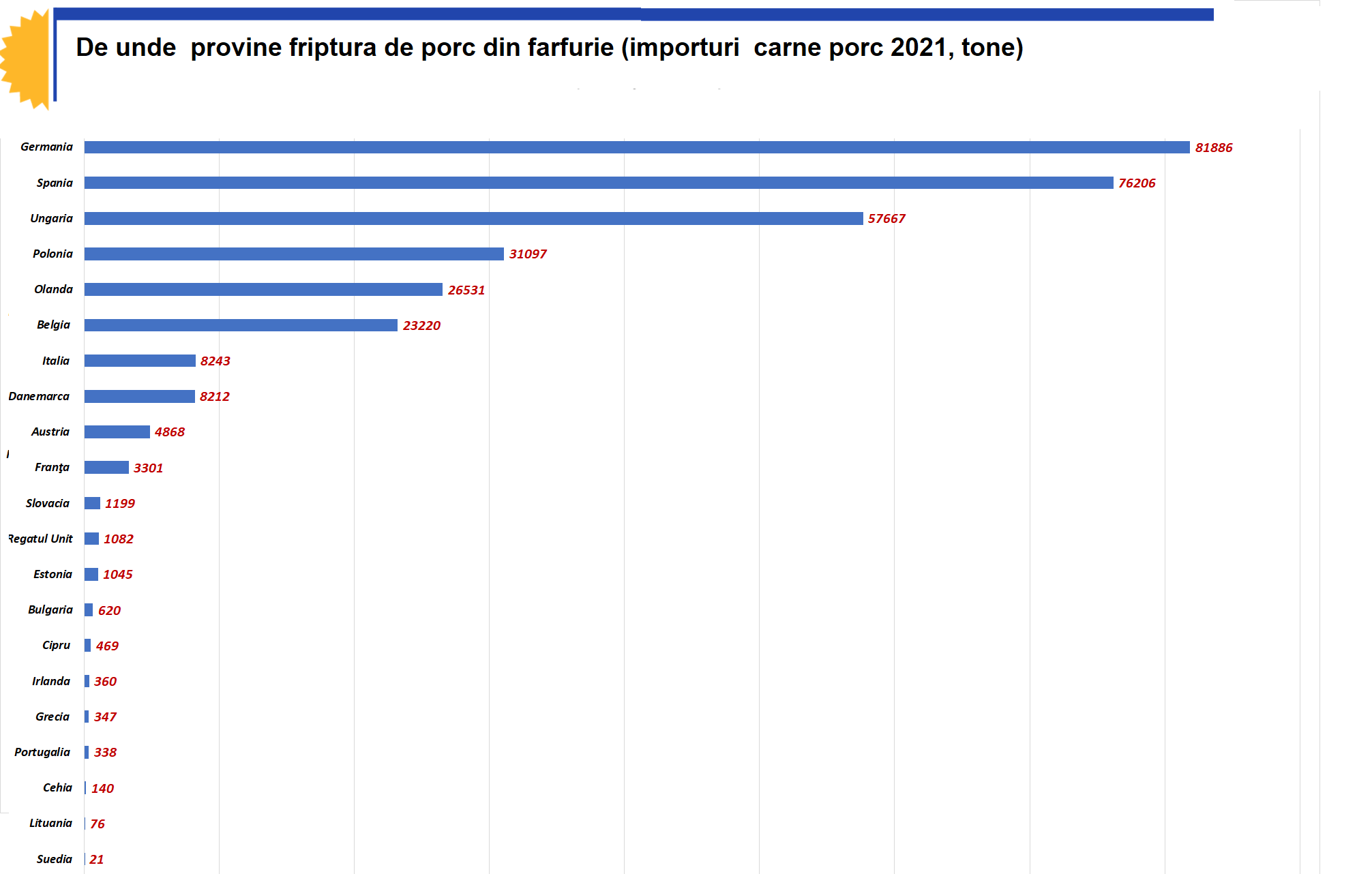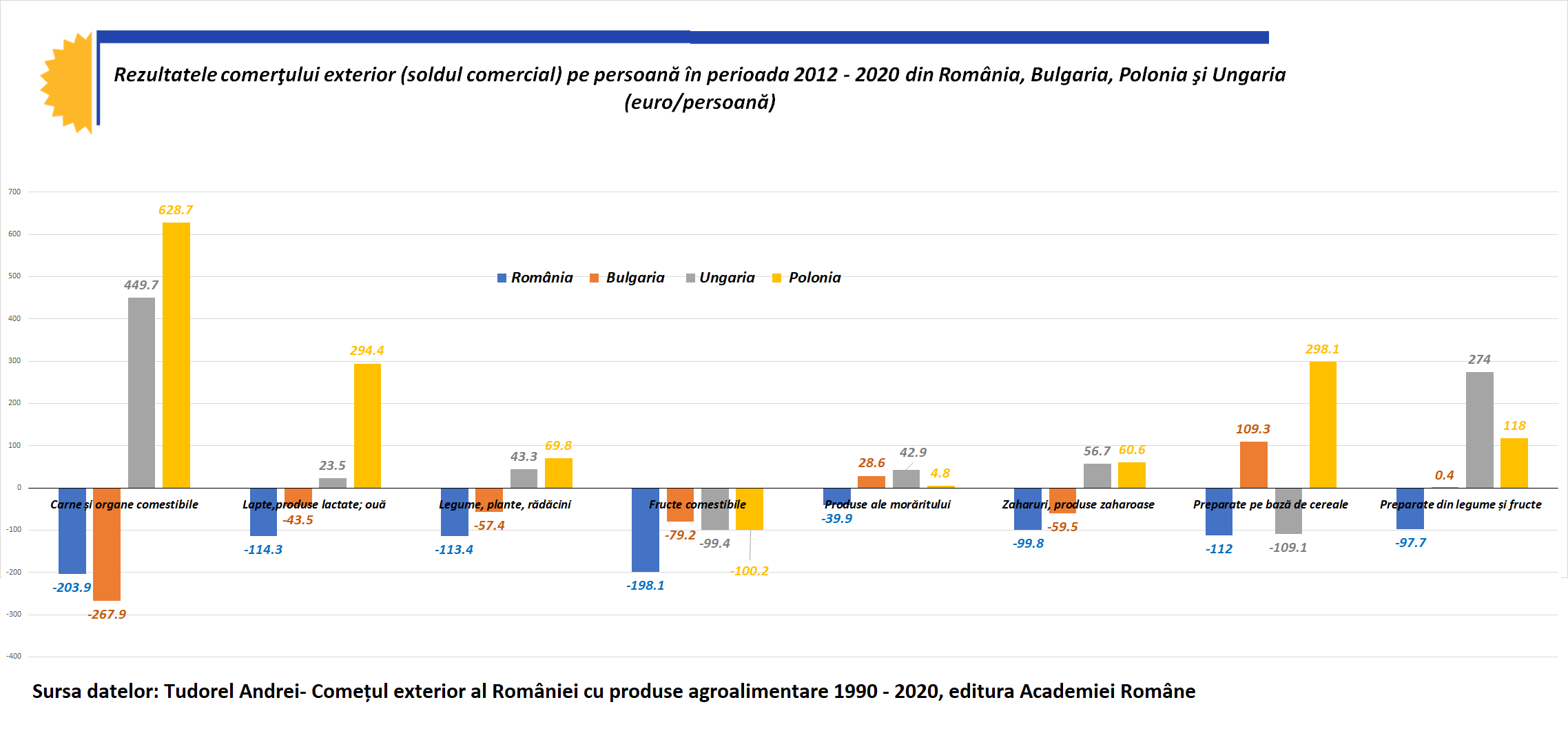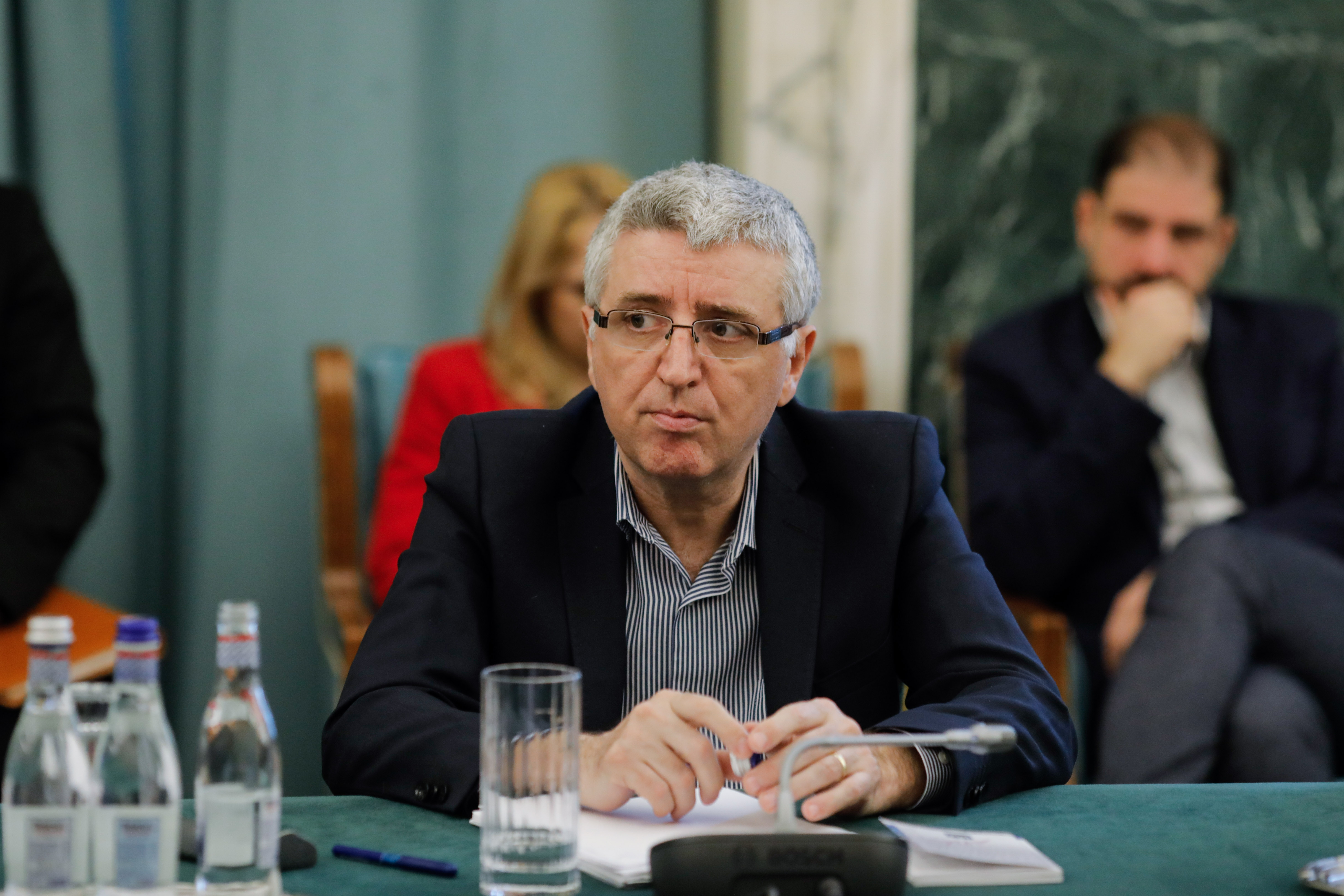
When I asked the Kaufland butcher shop assistant yesterday where the pork neck she had just weighed for me was from, she quickly answered: from Sweden. I couldn’t believe it. “How is Sweden, ma’am? We don’t have pigs in Romania anymore???” To which the woman, looking at the label of the package of meat, says: “Sorry, it’s from Spain. We’re out of Swedish pork neck!”
In 2021, pork imports cost us more than 600 million euros, that is, more than 30 euros for every Romanian. This money can be seen in the deficit of the trade balance, which has grown dangerously. Or in the current account deficit, which Iserescu constantly mentions at NBR conferences when he complains about the large double deficits – current account and fiscal. The current account deficit is growing alarmingly, and the trade balance has significant deficits. The service sector brings money into the country, but not enough to cover the gap between what we import and what we export.
We imported more than 320,000 tonnes of pork in 2021, the latest year for which Statistica has final data
“Although it has significant natural potential, Romania, unlike Bulgaria, Hungary and Poland, has allowed itself the ‘luxury’ of importing agro-food products in significant quantities to the detriment of domestic production,” explains the head of the INS. Tudorel Andrey in the work recently published by the Academy publishing house “Foreign trade of Romania in agro-food products 1990-2020”.

A significant negative impact on our foreign trade in agri-food products, almost 335 euros per person, was recorded in the account of the product category “Live animals and products of animal origin”. Practically, says the head of statistics, ahead of exports over imports of goods of this category, every Romanian has accumulated, Every year from the period 2012-2021, the debt is almost 28 euros.
It seems not much, says Andrii Tudorel, but if we take into account the number of years and the size of the permanent population, we will find that the accumulated debt is almost 4 billion euros!
Among the product categories with the largest registered deficit per person, we mention: meat and fruit

The data in the table above shows that while the other three countries recorded a surplus of processed agri-food products, Romania had a large deficit.
Romania recorded the largest deficit in “Meat and edible offal”, as it exported far more live animals than it imported throughout the transition period. It can be said that the average Romanian has created a surplus of raw materials in the livestock sector, but creates a deficit of the processed product that gives the exported product a higher market value.
Poland registers the largest positive balance in foreign trade of products from the section “Meat and edible organs”, while this country notes one of the most stable deficits from the section “Live animals”.
From the above results, it follows that the trade balance for agro-food products can record positive results only if the country has high capacity for processing raw materials of plant and animal origin.
“Why do these at least paradoxical situations happen?” – asks Andrii Tudorel. By using the entire value added chain, we could have competitive advantages both at the European level and in other foreign markets. This would reduce the burden on Romania’s foreign trade balance and increase the number of qualified personnel from agriculture, respectively from the food industry,” he explains.
We have great natural potential, but in complete contradiction with other countries, we record a colossal trade deficit
When we evaluate the agricultural sector, we must see to what extent the sector can meet the food needs of the population as a whole, but especially in times of crisis, such as the recent health crisis.
In 2019 and 2020, Poland recorded a surplus of almost 22.2 billion euros, which meant a surplus at the level of every Pole of 585 euros. During these two years, Hungary recorded a surplus of trade balance with agro-food products in the amount of more than 6.2 billion euros, which is 640 euros at the level of an average person.
In Bulgaria, in two years, a surplus of 1.87 billion euros was obtained from trade in agri-food products, which is 270 euros per notional average person.
Unlike the other three countries in the region, during the two years of the health crisis, Romania imported 3.2 billion euros more in agricultural goods than it exported, representing a deficit of 322 euros per conditional average person, which is an additional burden to the accumulated in previous years. periods and the acute dependence of providing the population with the majority of agro-food products from the production of other countries.
“How long will we satisfy domestic demand for agri-food products at the expense of mass imports and what price will we pay in the future?” “, Andriy Tudorel is surprised
The situation with meat and meat products is even more alarming: we export only 1.1 kg per person, we import – 18.4 kg.
Available for average human consumption per person, estimated at 74.3 kg, 27.6% is achieved through imports (net contribution of exports). We have a deficit per person of 20.5 kg/person.

The situation with pork is very disappointing. Surprisingly, for a country with traditions in this sector of animal husbandry, about 38 kg available for average human consumption is covered by 45% of the surplus of imports, which is provided by exports.
As for pork, on average only 1.1 kg per person is exported and 18.4 kg is imported, resulting in a deficit of 17.3 kg per person. We ask ourselves how long such a negative situation can last for a product that has traditions in our country.
We remind you that due to the decrease in the number of animals over the last 30 years, Romania is no longer at the world or European level among countries with an important production of meat obtained by slaughtering animals.
Among the 20 largest meat-producing countries in the world, we also find five countries of the European Union: Germany with a production of 8.2 million tons of carcasses, which corresponds to a production of almost 100 kg per inhabitant, Spain with 7 million tons with an average of per capita 150 kg, France with production of 5.6 million tons — 86 kg/person, Poland with production of 4.5 million tons — 116 kg/person and Italy with production in 2018 of 3.7 million tons – 61 kg/woman. Romania produces slightly more than 1 million tons of meat, which is equivalent to 52 kg per inhabitant
Several possible explanations
In a discussion with HotNews, Raiffeisen Bank’s chief economist explained some of the reasons why we are where we are. “As an economist, it is clear to me that Romania has very large resources in agriculture. We are a country with huge agricultural potential. We are among the top 5 at the European level by the area of arable land after France, Spain, Germany and Poland. So, in terms of our size as an agricultural player, we should be a very large player at the European level. Agriculture also plays a very important social role in Romania. We also have a population that is quite rural and engaged in agriculture – the population employed in agriculture is about 21.8% of the total, but the gross value added of agriculture is only 3.8% of GDP. percent That’s a lot. The European average is 4.6%,” said Dumitru.
What else did the Romanian economist add regarding our agriculture and animal husbandry
- When 20% of the employed population produces only 4% of your GDP, that means we have a lot of inefficiencies in the use of labor in agriculture. At the same time, we have this problem of natural agriculture. If we look at the numbers, we see that approximately 87 percent of the population employed in agriculture are so-called “self-employed,” mostly engaged in what we call subsistence agriculture.
- If we look at the size of the farms, the average farm size in Romania is 3.7 hectares, which is ridiculous because it is impossible to do efficient farming on 3.7 hectares. At the other pole is the Czech Republic, where the size of the farm is 130 hectares. Our Bulgarian neighbors have an average size of 22 hectares and have a very high rate of unification. In our country, unification is much slower.
- We have many subsidiary farms. We have more than 86% of farms that consume more than 50% of what they produce (meaning that these farms produce more for their own consumption), and at the same time we have one of the highest proportions of farms in Europe where the manager is over 65. years We have aging farm managers, and that obviously has serious consequences.
- If we look at the education of those engaged in agriculture, or the proportion of those who say they learn a trade on the job, or those who rely only on their own experience, in Romania we have the highest proportion. In our country, the majority – 90% – of those engaged in agriculture rely on the experience gained at work.
- Animal husbandry puts us at the bottom of the European ranking. We also have a big problem with animal husbandry. In terms of the number of animals/farm, we are the last in the EU. Even in terms of the number of animals per hectare, everything is bad for us, and all this is also reflected in the trade balance.
- Likewise, we have only 0.6% of European production of beef, 1.5% of pork, 3.4% of chicken and only 2.6% of milk. Why are these numbers important? Because they are visible further in the trade balance. If we look at the trade balance, we have a large structural deficit in agri-food products, which is in a few major commodities: meat, vegetables, fruit and milk and dairy products.
Source: Hot News
Lori Barajas is an accomplished journalist, known for her insightful and thought-provoking writing on economy. She currently works as a writer at 247 news reel. With a passion for understanding the economy, Lori’s writing delves deep into the financial issues that matter most, providing readers with a unique perspective on current events.